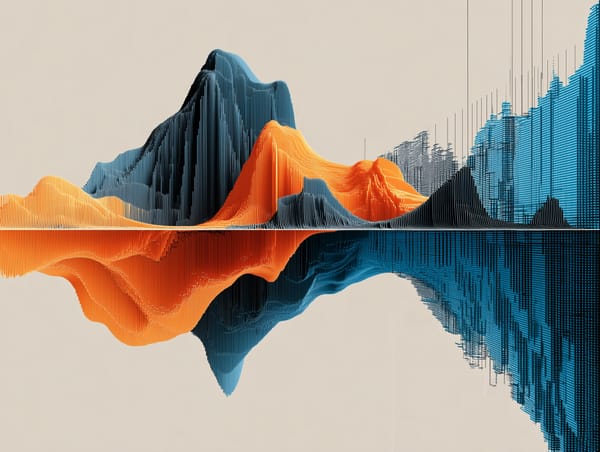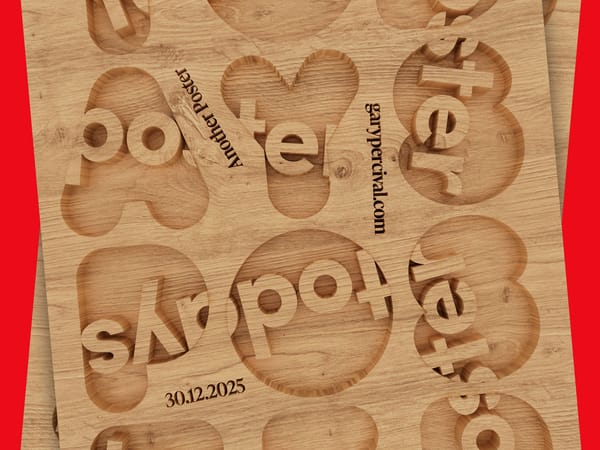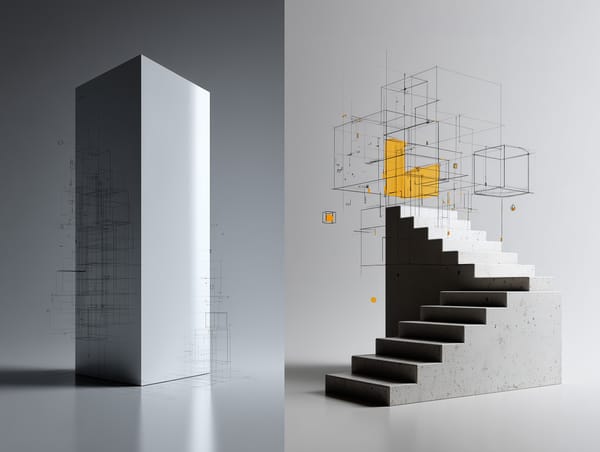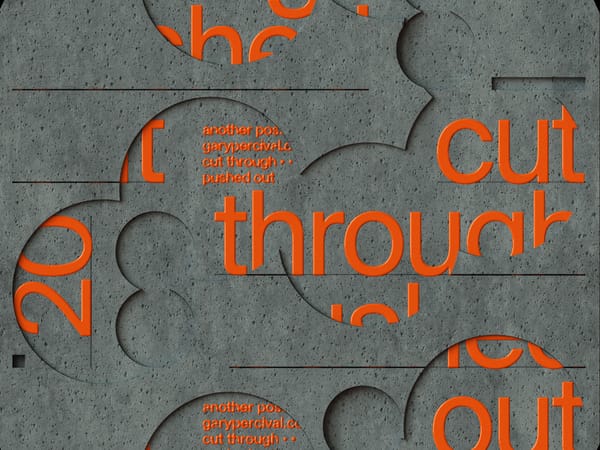It Looks Like Intuition. It’s Just Repetition
"What looks like instinct from the outside is usually just repetition. Intuition isn’t born—it’s earned through the quiet work of showing up, again and again, until patterns emerge."

We’ve all seen it.
The designer who instantly knows which typeface to choose.
The illustrator who lays down the perfect line without hesitation.
The freelancer who just “gets” how to position an offer, quote a job, or steer a client conversation with quiet confidence.
It looks like instinct. Intuition. Some kind of creative superpower you either have or don’t.
But here’s the truth:
It looks like intuition.
It’s just repetition.
That clean decision-making, that effortless flow, that ability to know what works without overthinking?
It wasn’t gifted. It was earned—through hours of doing the thing, again and again, until it became second nature.
And that’s good news for the rest of us.
Because if intuition is built—not born—then we all have access to it. The real question is whether we’re willing to put in the reps.
The Myth of the Natural
There’s a romantic idea in creative culture that certain people are just “naturally gifted.”
They have an eye.
A style.
A sense for what works.
They know how to improvise, adapt, and impress—seemingly without effort.
But what you’re seeing is not magic—it’s pattern recognition.
They’ve seen this client request before.
They’ve made this composition mistake before.
They’ve fixed this layout problem in ten different ways.
They’ve navigated this awkward pricing conversation more times than they can count.
What looks like a spark of genius is often just creative muscle memory.
They’re not guessing.
They’re drawing from a library of experience, quietly built through repetition.
Reps Create Recognition
Think about chess masters. They can look at a board and instantly spot winning moves that would take a beginner 20 minutes to even consider.
Not because they’re smarter.
But because they’ve seen those patterns thousands of times.
Design is no different. Neither is writing, illustrating, branding, negotiating, or pitching.
The more repetitions you get—through real-world work, creative play, or experimentation—the faster you begin to see patterns.
That’s when instinct starts to show up.
Not because you’ve “levelled up”, but because your brain now knows:
- What’s likely to work
- What’s likely to fail
- What to avoid
- What to trust
- What to question
Repetition trains your taste to catch up with your ambition.
But recognition isn’t glamorous. It’s built on all the unseen attempts no one claps for.
The Unseen Repetition Behind Every Confident Creative
Every creative who seems to “just know” the right direction?
They’ve spent years:
- Choosing the wrong direction
- Testing weak ideas
- Doubting their instincts
- Trying five versions before landing on the sixth
- Creating things they didn’t like just to figure out what they do like
- Working with tough clients who taught them soft skills
They’re confident now because they weren’t confident for a long time.
But they kept going.
They kept doing.
They kept practising the decision-making part—not just the craft part.
That’s what repetition really gives you:
Not just output—but clarity.
You Don’t Get Intuition by Thinking
One of the biggest traps creatives fall into is trying to think their way into confidence.
You over-plan.
Over-research.
Watch more tutorials.
Wait until you feel 100% ready.
But intuition doesn’t come from thinking.
It comes from doing.
Confidence is a result of evidence—not theory.
Want to trust your creative voice more? Make more things.
Want to quote with confidence? Write more quotes.
Want to navigate projects better? Take on a few small ones and notice what breaks.
Want to find your visual language? Make a hundred rough things.
Each rep teaches you something your brain alone can’t access.
You start noticing:
- What works for you (and what doesn’t)
- Where your ideas flow naturally
- What slows you down
- What energises you
- What clients actually care about
- What’s worth polishing and what isn’t
That’s intuition. And it only shows up when it’s been trained.
Don’t Confuse Consistency with Stagnation
Some creatives avoid repetition because it feels boring.
They want every project to feel wildly different, wildly new.
And while variety is essential, avoiding repetition can mean missing out on the benefits of refinement.
Repetition doesn’t mean doing the same thing mindlessly.
It means doing the same kind of work more mindfully—each time noticing something new, pushing a bit further, sharpening the edge.
It’s how musicians master songs.
How athletes refine form.
How chefs dial in flavour.
How designers build rhythm, balance, and systems that can bend and evolve.
Repetition is how your style sharpens, your process tightens, and your confidence builds—quietly, over time.
Want Better Instincts? Create More Feedback Loops
If intuition is the ability to make faster, better decisions, then feedback is your training partner.
You get feedback in many ways:
- From collaborators and clients
- From your own frustration with a piece
- From reflection after a project finishes
- From testing ideas in public
- From doing something 5 times and finally liking the 6th
The more you create, ship, review, and adjust, the stronger your inner compass becomes.
You don’t need someone to hand you the answers.
You just need to stay in motion long enough to collect the data that builds your own.
How to Build Your Creative Intuition (Deliberately)
If you want to fast-track your instincts, here are a few habits that help:
Create More Than You Consume
Don’t just scroll for inspiration. Make your own. Even if it’s bad. Especially if it’s bad.
Repeat with Intention
Choose a creative constraint and repeat it. A weekly poster. A daily sketch. A monthly case study. Track what changes each time.
Review Your Work Regularly
Look back on old projects. Ask: What worked? What didn’t? What patterns do I see now that I missed then?
Learn by Doing, Not Just Watching
Tutorials are great, but only if they lead to practice. Watch 10 minutes, then try it immediately. That’s how you retain.
Take Creative Notes
Keep a running list of insights from each project. What surprised you? What frustrated you? What would you do differently next time?
Final Thought: Mastery Doesn’t Arrive. It Emerges
If you’re waiting for intuition to show up one day and tell you what to do—you’ll wait forever.
Because intuition doesn’t knock.
It arrives quietly, disguised as the 100th iteration of something you almost gave up on.
It shows up inside the work—not before it.
So instead of trying to leap ahead, show up and repeat.
Create small. Create often. Learn in motion.
What looks like instinct from the outside is really just a mountain of invisible reps.
And the good news?
You’re not behind.
You’re just early in the repetition.



